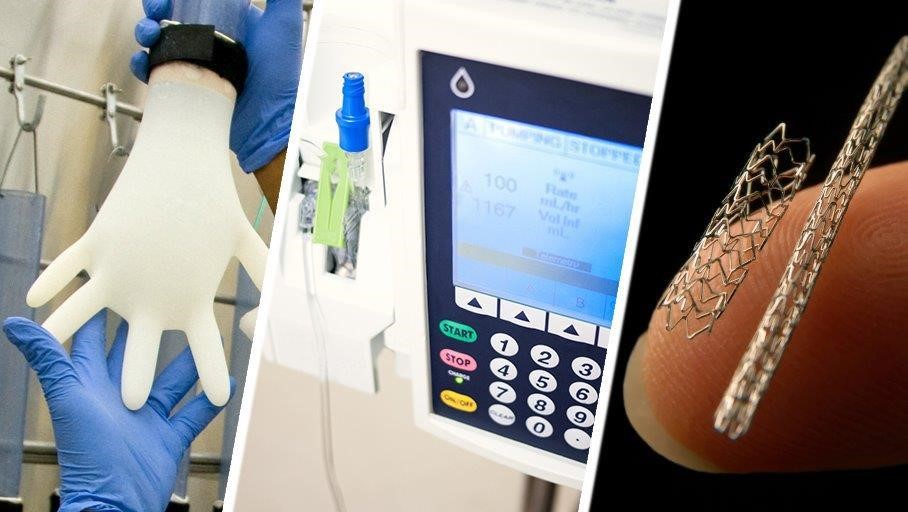FDA Proposal to Align its Quality Systems with International Consensus Standard Will Benefit Industry and Other Regulators
FROM A GLOBAL PERSPECTIVE
By Melissa Torres and Ravi Bharwani
February 22, 2022
To ensure that every medical device made is consistently safe and effective for patients and health care providers who rely upon them, medical device manufacturers across the globe abide by certain quality standards.
But adhering to quality standards has been a challenge for companies that manufacture medical devices in other countries as well the United States because the FDA’s quality standards are different from those required by many other regulatory authorities.
Now that’s starting to change. We’re pleased to report that today the FDA is issuing a proposed rule that would amend the agency’s device quality requirements to align more closely with the international consensus standard for medical devices manufacturers — ISO 13485:2016 — used by many other regulatory authorities around the world.
We know this is good news for both industry and our regulatory partners. To understand why, let’s review where we’ve come from.
By law, all FDA-regulated medical products — including medical devices — must establish and follow current Good Manufacturing Practices (cGMP). For more than 20 years, the FDA’s cGMP requirements for medical devices have been set forth in the Quality System (QS) regulation. Any company that wanted to market a nonexempt finished medical device in the U.S. was required to have a quality system in place for the design, manufacture, packaging, labeling, storage, installation, and servicing of the device. There were also requirements that quality data be analyzed to identify and correct quality problems, and that consumer complaints be evaluated.
When the QS regulation was unveiled in 1996, it was considered a game changer for creating a culture of quality, with management buy-in, across the device life cycle. In addition, for the first time, the product’s design phase was included as part of the life cycle because studies had shown that a significant percentage of device recalls were due to design flaws that occurred long before the product was manufactured. Moreover, the rule was deliberately nonprescriptive in order to accommodate the vast diversity of medical devices.
The regulation was rolled out at a time when the FDA was beginning to consider ways to work toward harmonization and alignment with other medical device regulators and industry — efforts that would soon be directed in our work with the Global Harmonization Task Force. (Later the task force would disband, and we would move to the International Medical Device Regulators Forum for regulators only.) As a result, the agency took pains to harmonize the QS regulation as much as possible with the international quality management system for medical devices known as ISO 13485, set by the International Organization for Standardization.
While the FDA was introducing the QS regulation, our regulatory colleagues in Europe were in the midst of deciding how they would regulate medical devices and chose to design their quality systems around ISO 13485.
In the years since then, the FDA’s QS regulation has provided appropriate and effective requirements for the establishment and maintenance of a quality management system. But regulatory expectations for a quality management system continued to evolve, and these expectations were incorporated in ISO 13485. In 2016, ISO 13485 underwent a major revision that included a more robust discussion of how to manage risk, and the FDA was fully engaged throughout this standards development process.
The proposed rule that the FDA is issuing today calls for incorporating by reference the 2016 edition of ISO 13485. (Standards go up for systematic review three years after a new edition is published and five years afterward. ISO 13485:2016 went up for systematic review in 2019 and was reconfirmed in 2020.) The proposed rule also includes additional requirements that help connect and align ISO 13485 with existing requirements in the Federal Food, Drug, and Cosmetic Act and its implementing regulations, and would clarify the device CGMP requirements for combination products.
While the medical device industry has been eagerly awaiting this announcement, so too have our regulatory partners who participate with the FDA in the Medical Device Single Audit Program (MDSAP). That program was initially established as a pilot to consider whether it was possible to use a single audit of a manufacturing facility to satisfy the relevant requirements of the participating regulatory authorities. Under this program, MDSAP recognized auditing organizations — i.e., third party auditors — conduct a single regulatory audit based on ISO 13485 as well as the additional statutory requirements of the pilot program members.
So far, regulators in five countries are full participants in the program: the FDA, the Therapeutic Goods Administration of Australia, Brazil’s Agência Nacional de Vigilância Sanitária, Health Canada, and the two Japanese regulatory authorities — Japan’s Ministry of Health, Labour and Welfare, and their Pharmaceuticals and Medical Devices Agency.
Over 6,200 medical device manufacturing sites worldwide are currently registered for MDSAP, and the program is now required for Class II, III, and IV medical device licenses in Canada. Several other regulatory agencies are closely monitoring MDSAP’s progress as Affiliate Members to the program. They include Argentina’s National Administration of Drugs, Food and Medical Devices; Singapore’s Health Sciences Authority; and the UK’s Medicines and Healthcare products Regulatory Agency.
Based on the important consequences for both manufacturers and our regulatory partners, we believe the FDA’s proposed rule, when finalized, will be another game changer.
It will continue the FDA’s efforts to align its regulatory framework with that used by other regulatory authorities to promote consistency in the regulation of devices and provide timelier introduction of safe, effective, high-quality devices for patients.
Read more on FDA.gov: Quality System Regulation and Medical Device GMPs
Melissa Torres is associate director for international affairs in the Center for Devices and Radiological Health
Ravi Bharwani is the principal advisor for global policy in the Office of Global Policy and Strategy



